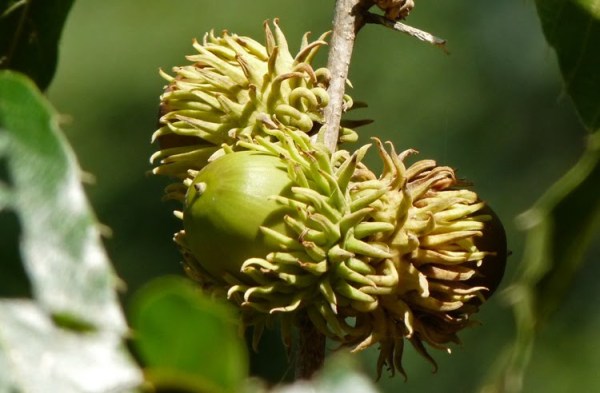- (515) 967-9575
- 237 NE 80th St | Pleasant Hill, IA 50327
Come see our Flight Before Christmas in our Flight Zone Toptracer.
Open Monday-Saturday 9a-10p & Sundays 10a-5p Su until January 10!
Come see our Flight Before Christmas in our Flight Zone Toptracer.
Open Monday-Saturday 9a-10p & Sundays 10a-5p Su until January 10!
If you recall, my dad, Tom, is our resident tree guy here at Toad Valley. Over the years, he has planted nearly every tree you will find on our golf course. He writes an article for the Iowa Woodland Owners Association. In it, he shares information about trees that we have on the golf course that are non-native to our region.
Author: Tom Brady
This is a reprint of an article I wrote for the Iowa Woodland Owners Association newsletter titled “Timber Talk.”
The “Experts” stress the need to plant native species, but they also stress diversity. This column will deal with diversity and the trees covered will be native to the planet, but rare to Iowa.
Sawtooth Oak – Quercus Acutissima
Sawtooth Oak is native from the Himalayas to Japan. It is a broadly spreading tree reaching 50 feet in height and is nearly as wide. The leaves are peach-like with bristles. They turn a light tan to pale yellow in the late fall and often persist all winter.
The bark is mottled, especially when young, and is gray-brown with lighter fissures. Very striking.
 The rounded, up to one-inch in size acorn is two-thirds covered by an unusual cap that is covered with thin loose scales. Imagine a burr oak with frills.
The rounded, up to one-inch in size acorn is two-thirds covered by an unusual cap that is covered with thin loose scales. Imagine a burr oak with frills.
A few commercial gardeners offer this tree. I grew mine from seed obtained at the Des Moines Botanical Center. In case you are wondering, the tree was on the grounds and not in the dome.
There are several of these tress on the golf course. The biggest is at the north tip of the 5 tee “no mow.” The easiest to spot is in the row of trees paralleling the left pond off of number one’s tee along the cart path. It’s the tree that keeps its leaves all winter.
Join our Birthday Club to receive free golf! Boo yah!